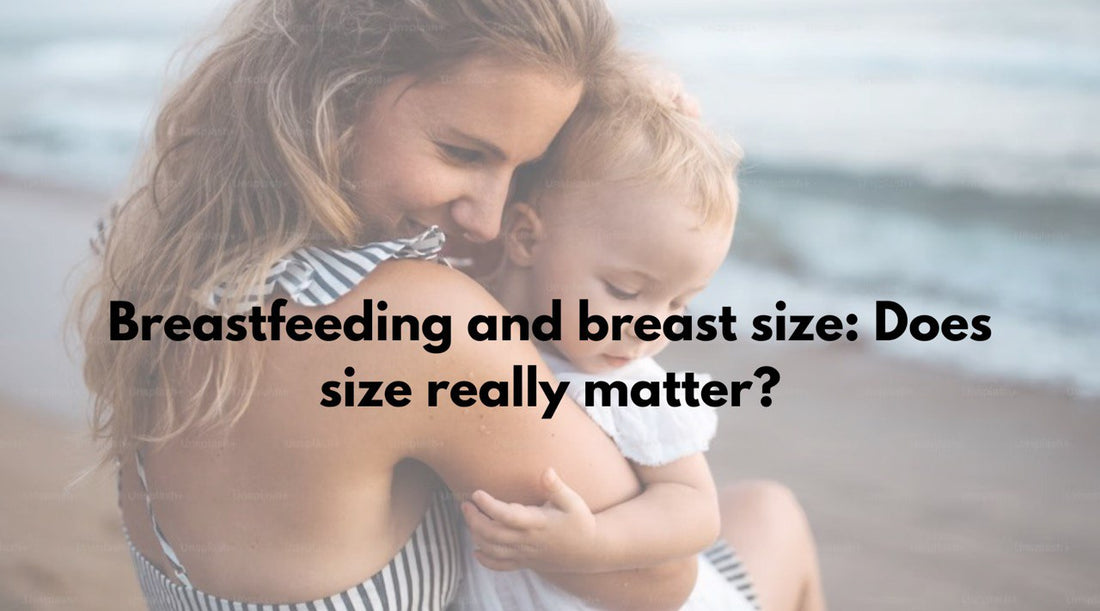
Breastfeeding and breast size: does size really matter?
Share
It’s a question many new mothers ask themselves: does the size of my breasts affect how much milk I can produce?
The simple answer is no. While your breasts may grow during pregnancy and breastfeeding, their size has little to do with milk supply. A parent with smaller breasts can produce just as much milk as someone with a larger cup size. Milk production is driven mainly by how often and effectively your baby nurses—your body naturally makes more milk the more your baby feeds.
Nipple size and shape
Nipple size or shape—whether large, flat, or inverted—can sometimes influence how easily a baby latches, particularly when you’re experiencing engorgement or early feeding challenges. But most babies and parents adapt with time and practice. If latching remains difficult, a lactation consultant can help you find techniques or tools such as nipple shields to make feeding more comfortable.
Why one breast might produce more milk
It’s common for one breast to supply more milk than the other. This can happen if milk ducts differ in size, if there’s a history of breast surgery or injury, or if the force of your letdown varies. A very strong letdown might cause your baby to pull away and prefer the other side, while a weaker letdown may leave your baby less satisfied.
Sometimes the difference is simply your baby’s personal preference—spending more time on one side will naturally increase production there.
Worries about low milk supply
Many mothers worry that smaller breasts mean less milk, but most people—regardless of breast size—are capable of producing enough for their baby. Early milk production can be affected by factors such as a long or difficult labor, a cesarean birth, smoking, or certain hormonal conditions.
If you’re concerned about your supply, reach out to a healthcare provider or lactation consultant. They can assess whether you might benefit from techniques to boost production or from temporary use of formula, and offer support tailored to your needs.
How breastfeeding may change your breasts
Pregnancy and breastfeeding naturally bring changes. Your areolas may darken, and your breasts often feel fuller and heavier. Supportive bras can help you stay comfortable.
After your breastfeeding journey ends, your breasts and nipples may not look exactly as they did before, and that’s completely normal. These changes are a natural part of motherhood—and a reminder of the nourishment and comfort you’ve provided for your baby.
Bottom line
No matter their size or shape, breasts are designed to create the perfect nutrition for your little one. Trust your body—milk production depends on demand, not on cup size.
